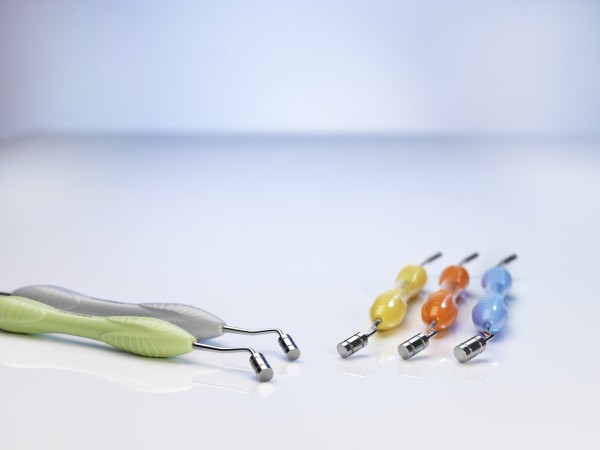Optimising spacing for excellent results
Featured Products Promotional FeaturesPosted by: Dental Design 28th December 2022

Implants are an excellent solution for many edentulous patients – providing a long-lasting replacement for lost teeth. However, it’s important to be aware of the potential complications of dental implant treatment and how these can be avoided. A key consideration in the treatment planning stage should be ensuring there is correct spacing between the implant you are placing, and any existing implants or natural dentition.[i] Usually, the minimum distance required between the implant and adjacent tooth is 1.5-2mm. Before placing the implant, it is preferable to correct any spacing issues, be it through tooth recontouring, the use of restorative materials, or orthodontics.i Both mesio-distal and buccolingual distances will impact the results,i so it is vital that these factors are considered prior to implant placement.
Potential complications of too little distance
When there is too little distance between the natural dentition and the implant placed, complications may occur. A lack of space between the tooth and implant will lead to a lack of blood supply, causing bone resorption.[ii] This interproximal bone loss can cause the implant to fail, potentially resulting in the loss of the implant and the neighbouring natural tooth. It may also be difficult to form an ideal emergence profile with the implant-retained prosthesis, due to the limited space between the natural crown and implant. Being unable to produce a proper emergence profile can lead to aesthetic, hygienic, and soft tissue complications – further increasing the risk of implant failure.ii
Not only this, but insufficient space surrounding the prosthesis leads to poor access for cleaning, making proper oral hygiene difficult or impossible. Inadequate cleaning of the prosthesis will lead to plaque build-up, and could potentially cause peri-implantitis. Peri-implantitis is an extremely damaging complication, resulting in the inflammation of the soft-tissue, and leading to bone resorption[iii] – ultimately sometimes resulting in the failure of the implant. In addition, the interproximal bone loss caused by the close proximity of the implant to the tooth may lead to reduced papilla height resulting in periodontal and aesthetic problems.ii
Problems with too much distance
Conversely, if there is too much space between an implant and the remaining natural teeth, complications can also occur, such as biomechanical issues and aesthetic complications. For example, the final prosthesis may require over-contouring to achieve a contact area with the tooth. The final prosthesis will be atypical – leading to difficulty with insertion procedures.ii
Placing an implant too far from the natural dentition can cause a biomechanical disadvantage as well, with damaging forces potentially resulting in bone loss. When miscalculated, the cantilever effect may amplify forces on the implant system, potentially resulting in the screw loosening, cement retention failure, or the failure of the implant. Alongside this, the forces exerted on over-contoured crowns can lead to screw loosening, screw fracture, or implant fracture.ii
 Complications with incorrect spacing between implants
Complications with incorrect spacing between implants
Clinicians can avoid placing implants too close together by following ideal spacing rules – the guidelines being approximately 3mm between implants and around 1.5-2mm away from natural dentition. Similar to the consequences of placing implants too close to natural dentition, insufficient space between implants can cause bone loss, due to the decreased blood supply, leading to the loss of inter-implant papilla.ii
Methods for preventing these issues may include the use of implant positioning devices which allow for ideal placement – minimising the likelihood of placing the implant too close or too far from the adjacent tooth. When selecting tools to assist in spacing implants, consider the LM Implant Misura MR instruments which are available from J&S Davis. LM Implant Misura MR instruments assist in positioning the first spiral drill at the correct distance from the existing implant or natural dentition – and take into account the patient’s anatomy. They help to ensure correct mesio-distal and bucco-lingual positioning minimising the risk of complications and helping to ensure a more aesthetic and functional outcome.
As with many issues which arise in dentistry, prevention is easier than treatment when it comes to complications associated with dental implants. Ensuring correct spacing at placement will encourage effective osseointegration and reduce the likelihood of problems. By optimising spacing between implant and existing dentition, you are able to provide your patients with a long-lasting solution to replace their missing teeth. Avoiding complications which could risk the survival of the implant and any remaining dentition is crucial and will help to ensure a long-lasting restoration.
For more information on the industry-leading products available from J&S Davis,
visit www.js-davis.co.uk, call 01438 747 344
or email jsdsales@js-davis.co.uk.
[i] Kheder, Waad M. Assessing The Position And Angulation Of Single Implants Restored In The Predoctoral Dentistry Program. University of Toronto (Canada), 2014. https://tspace.library.utoronto.ca/bitstream/1807/68598/1/KHEDER_WAAD_M_201411_MSc_thesis.pdf
[ii] Pocket Dentistry. Ideal Implant Positioning. (Date accessed: 07.09.22) https://pocketdentistry.com/ideal-implant-positioning/
[iii] Oral Health Group. Peri-implantitis and the risk factors. (Date accessed. 08.09.22) https://www.oralhealthgroup.com/features/peri-implantitis-risk-factors/








